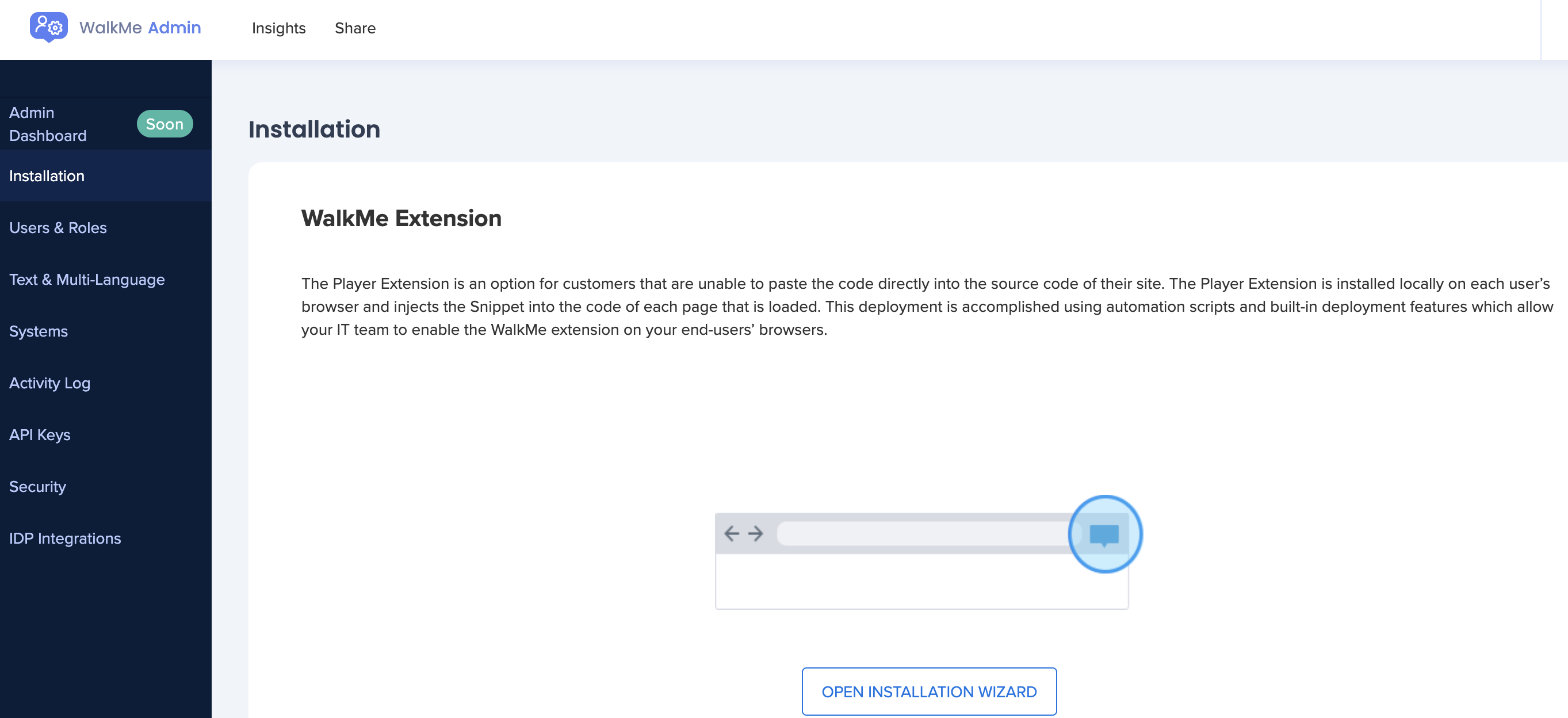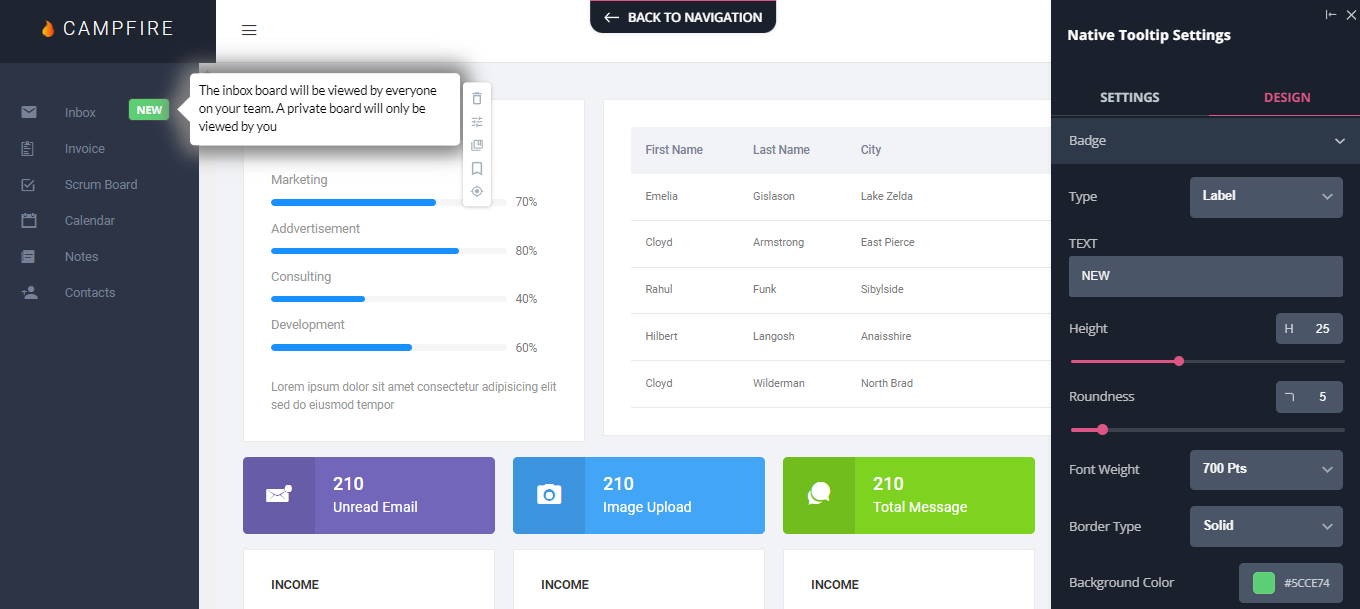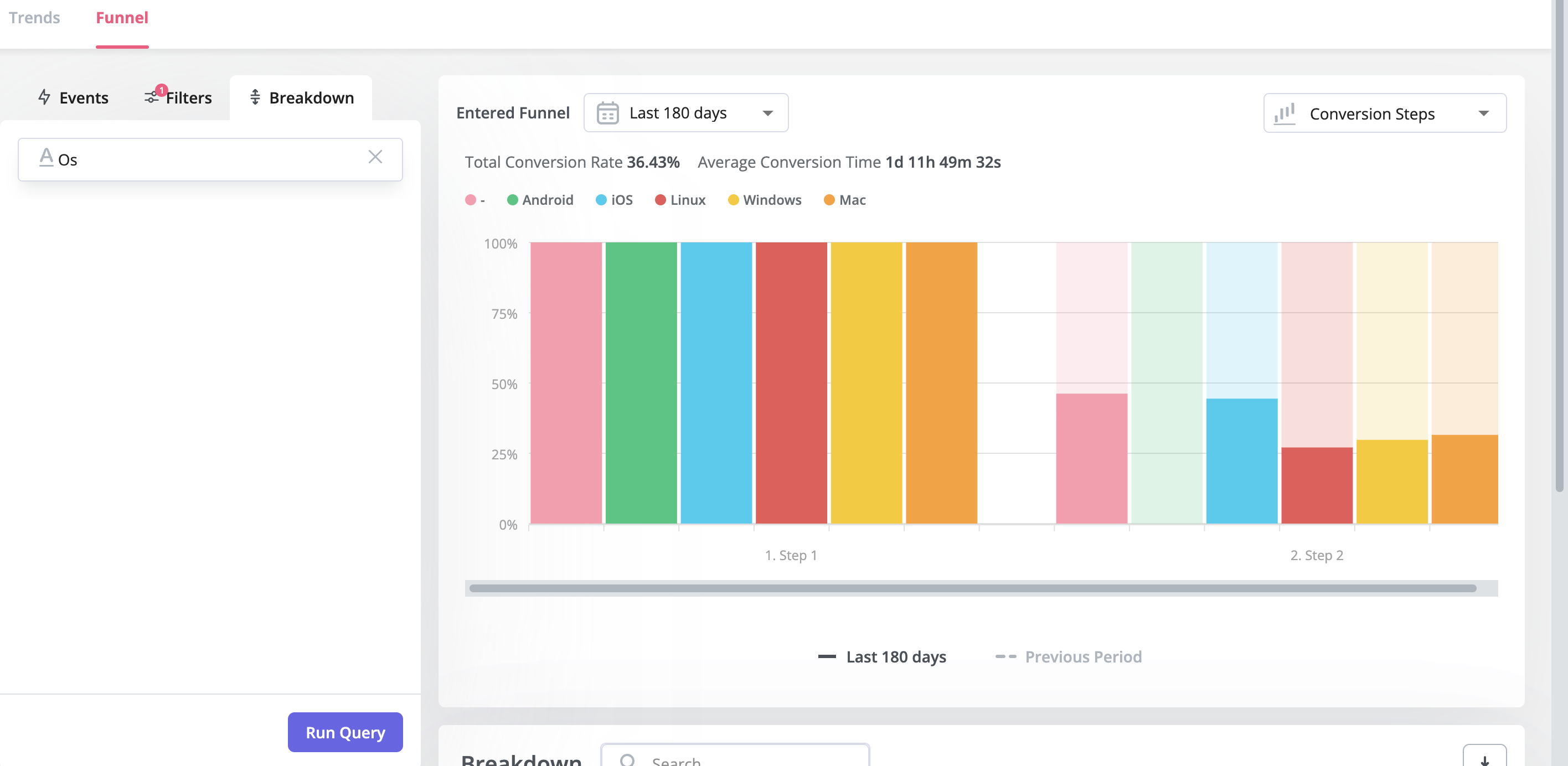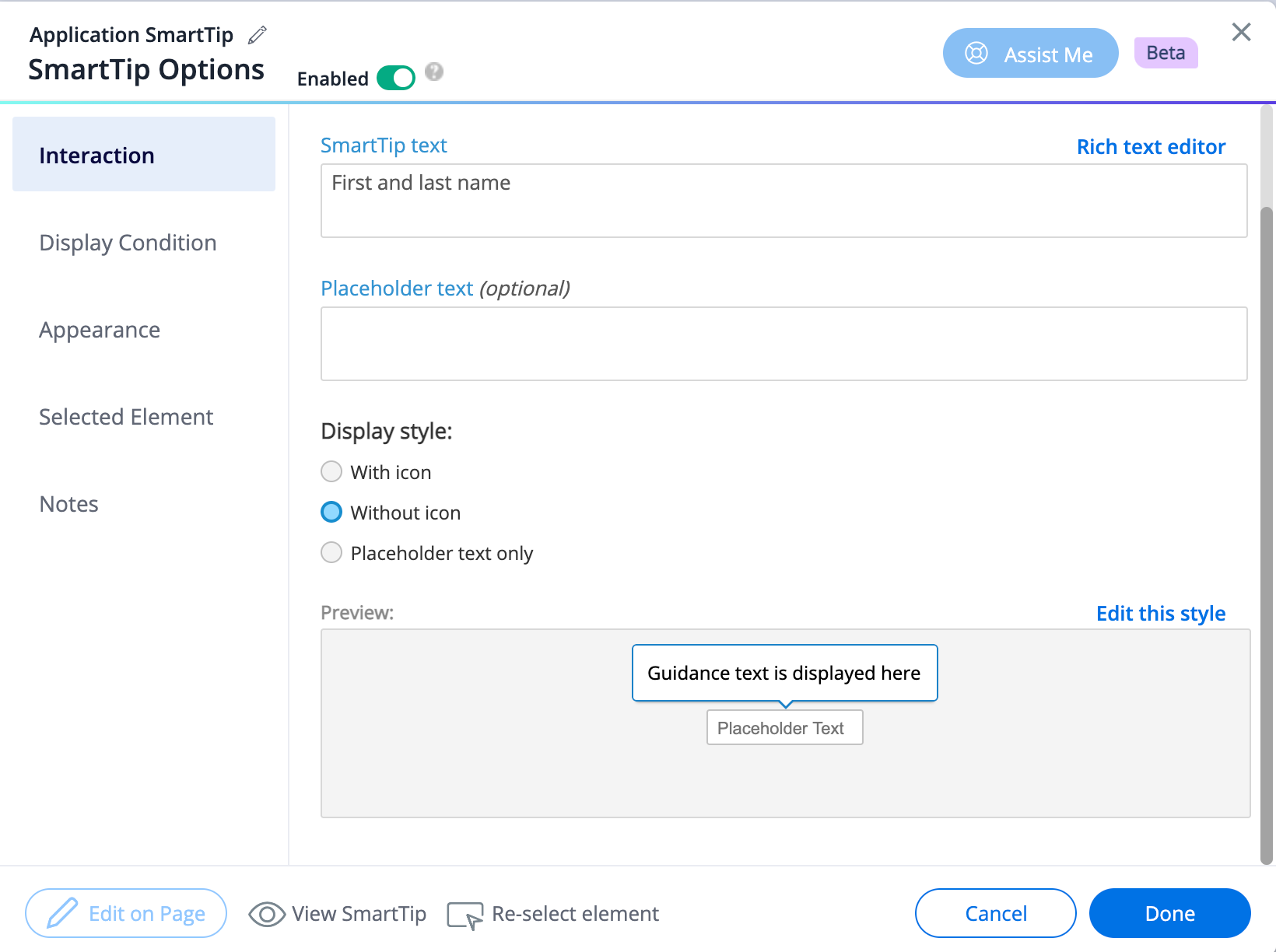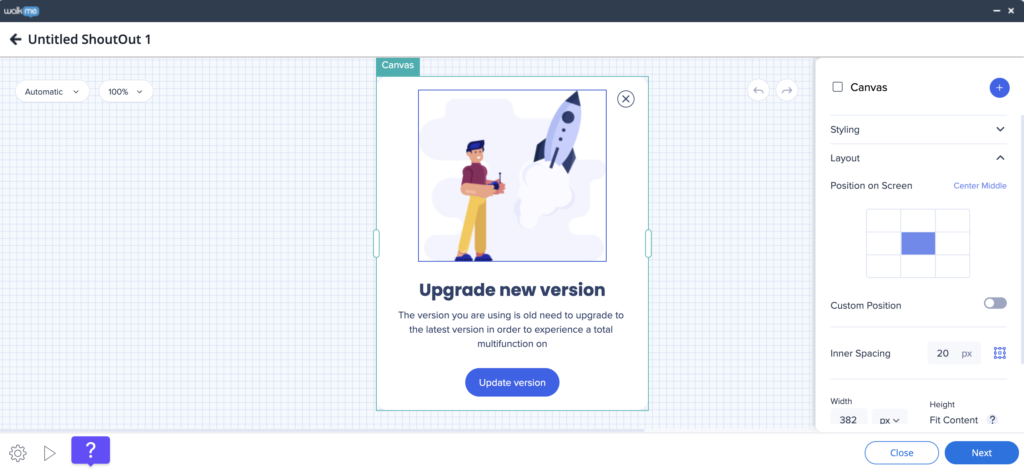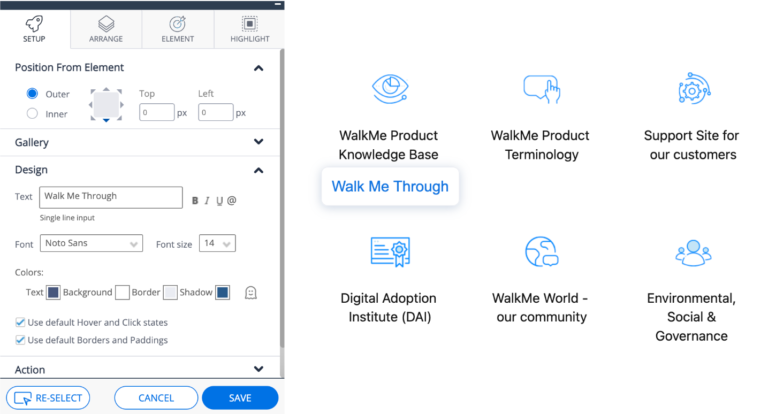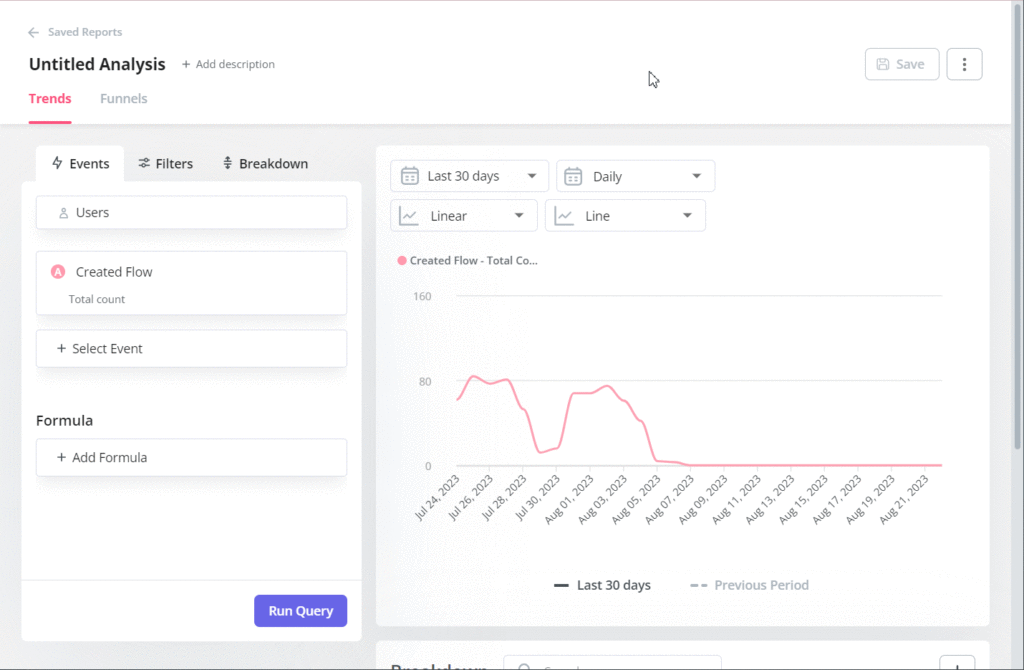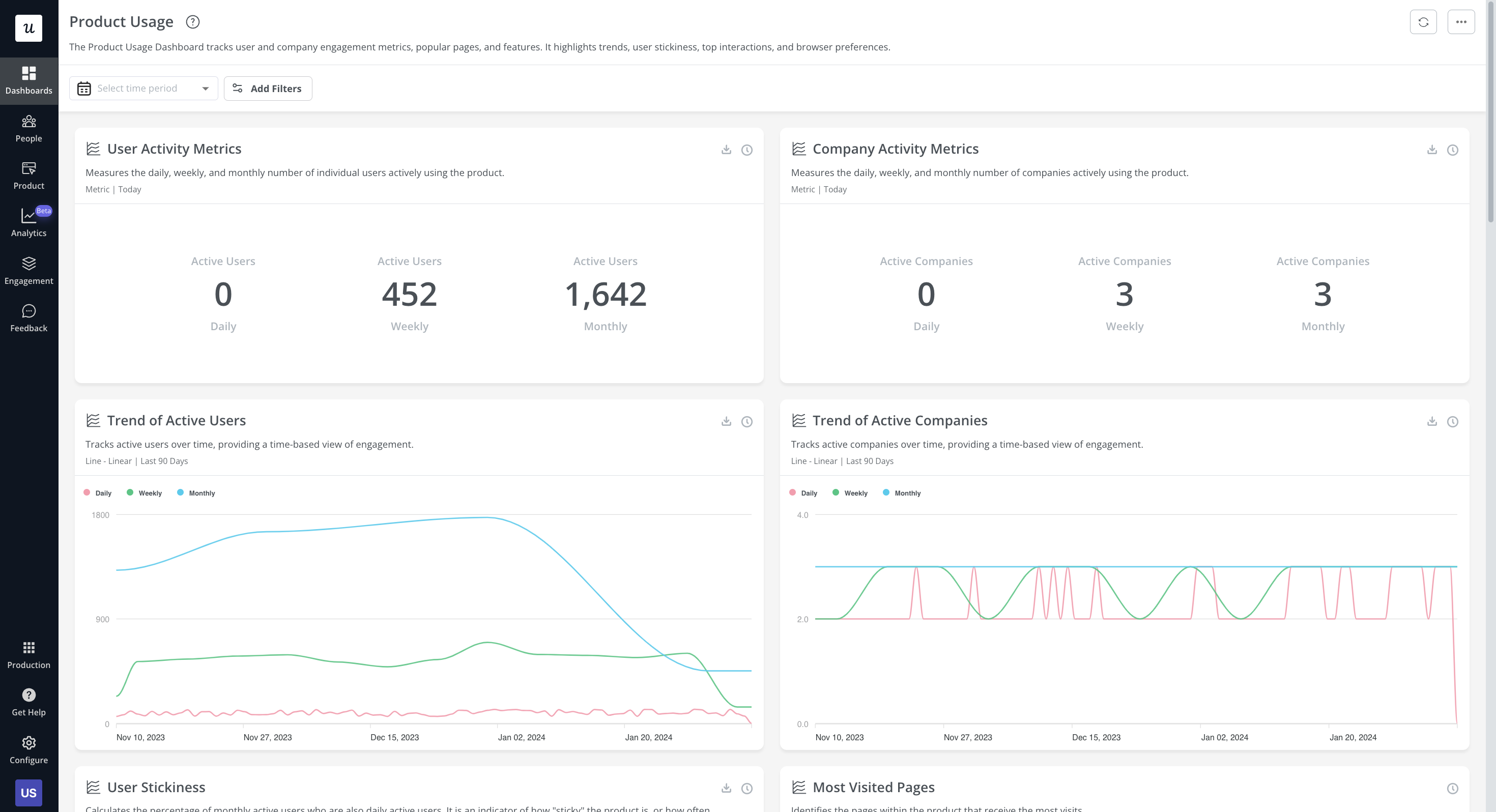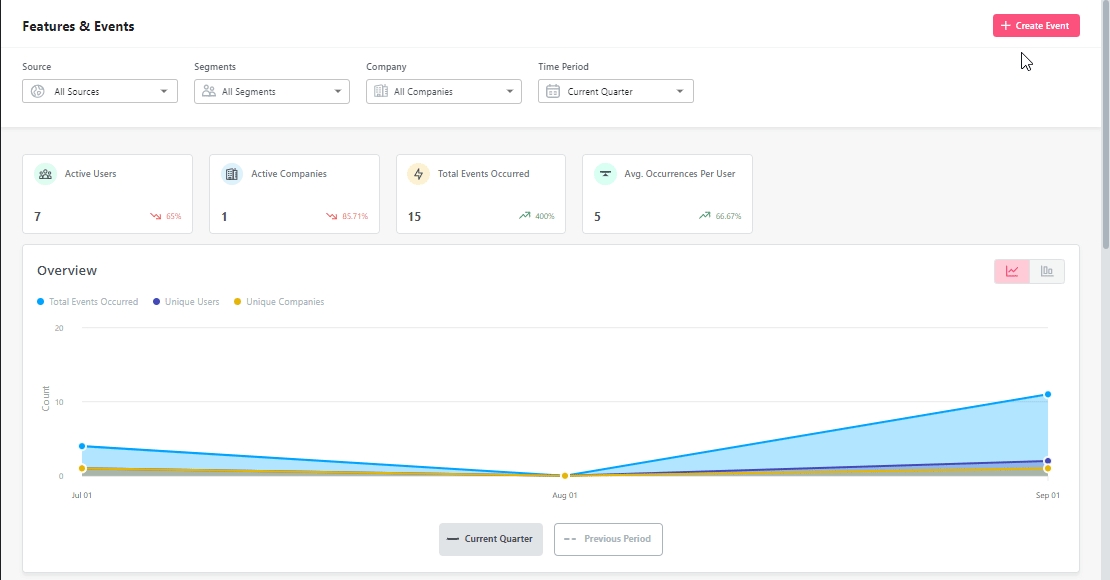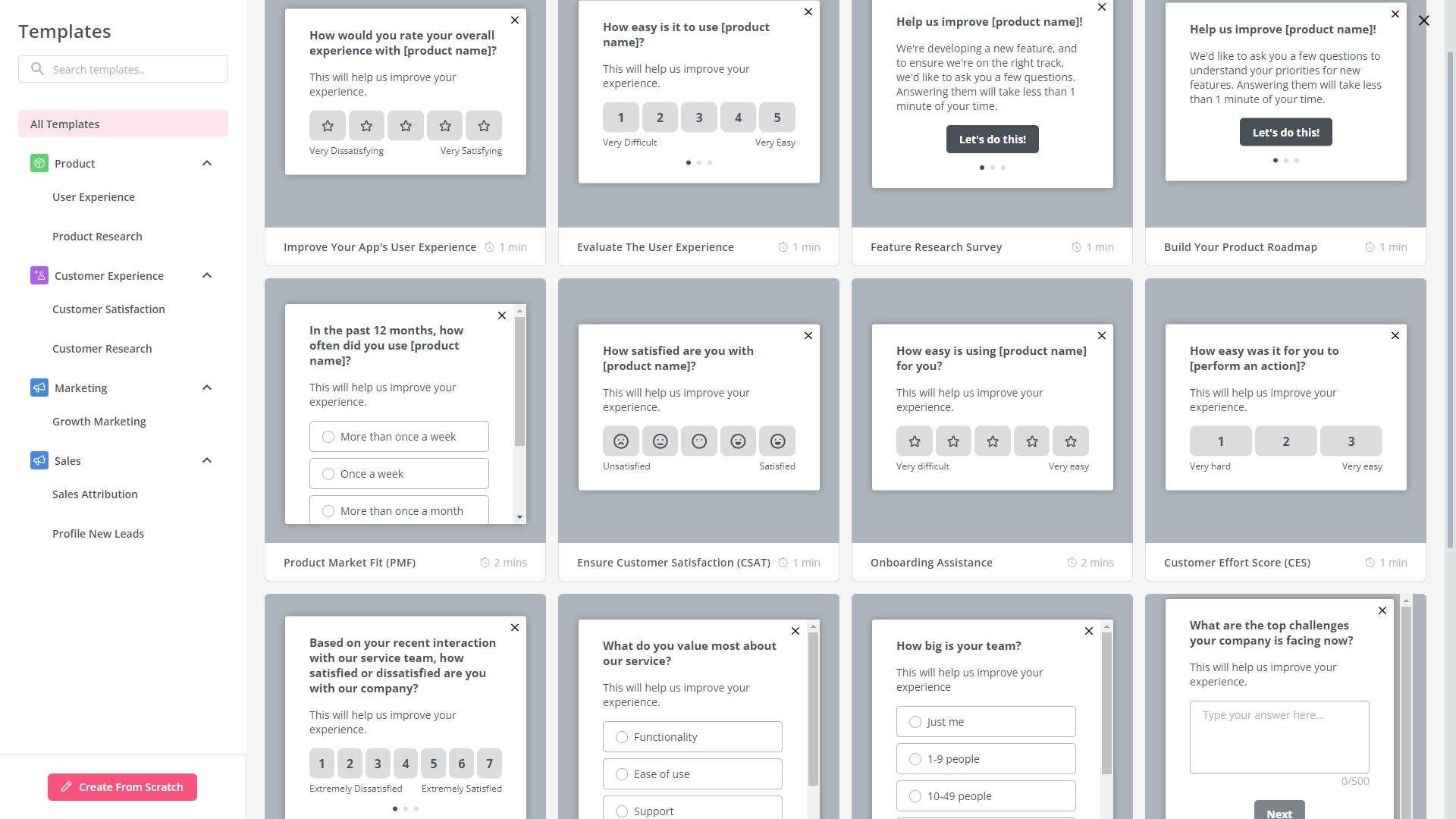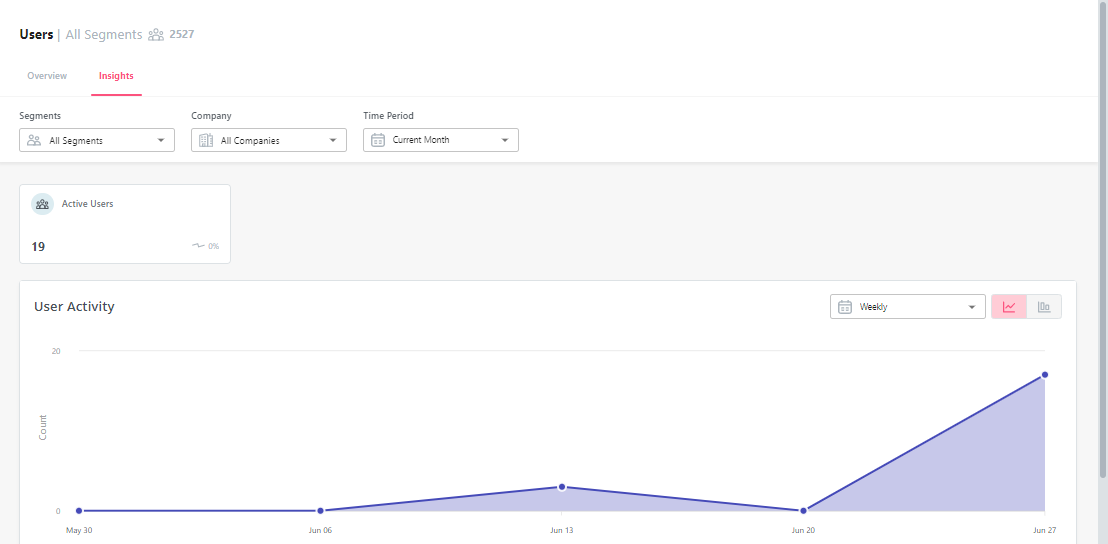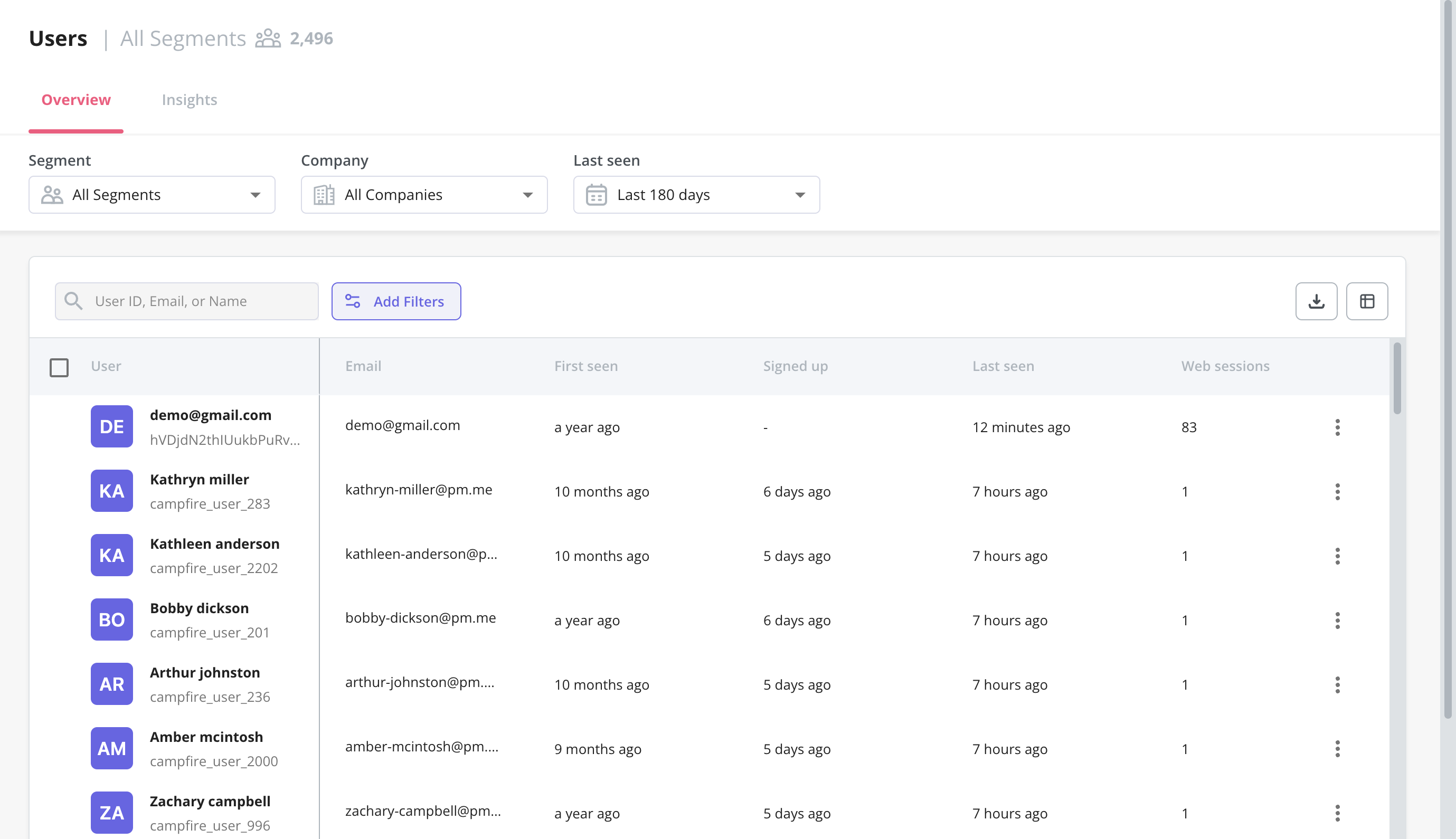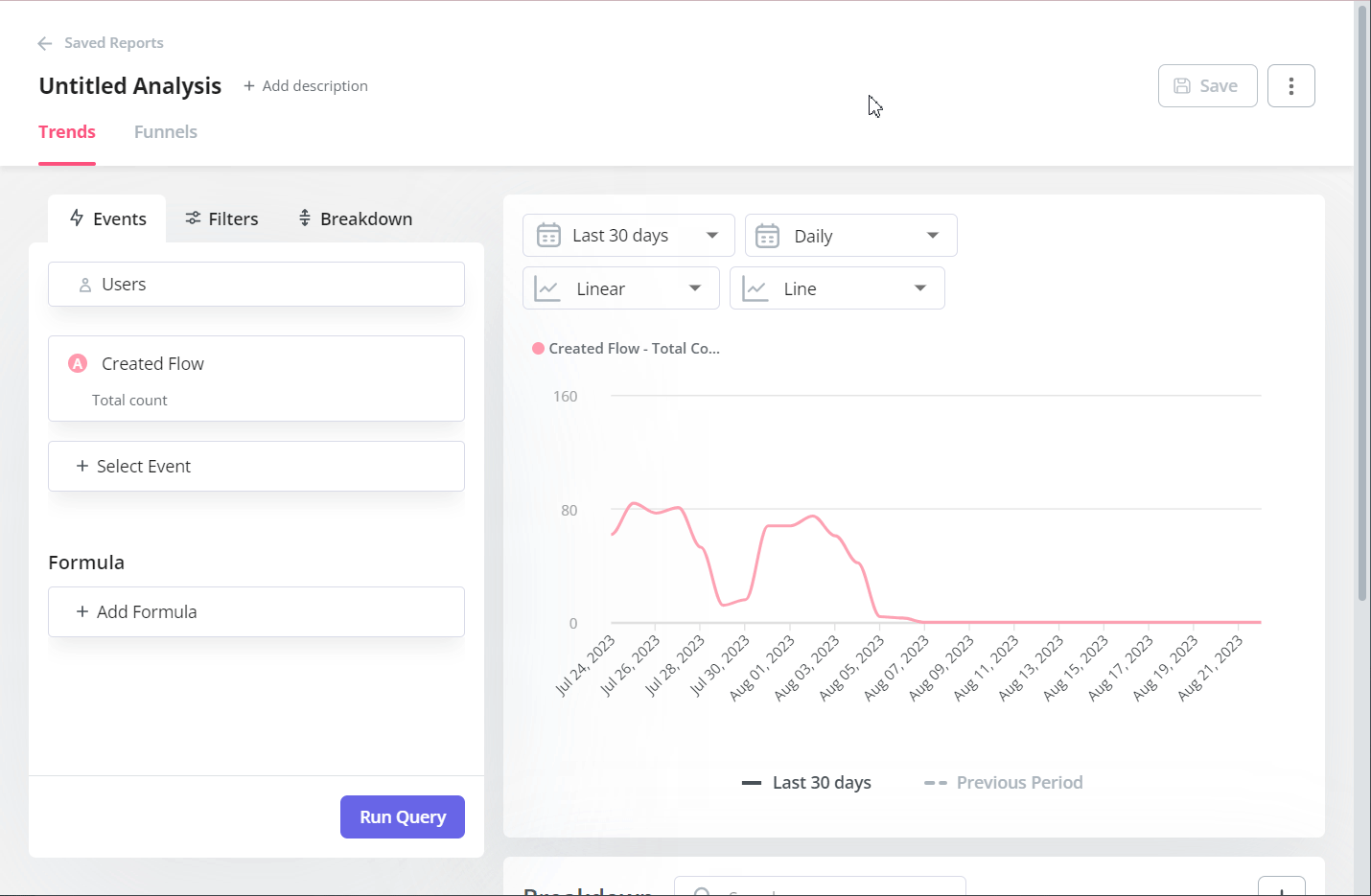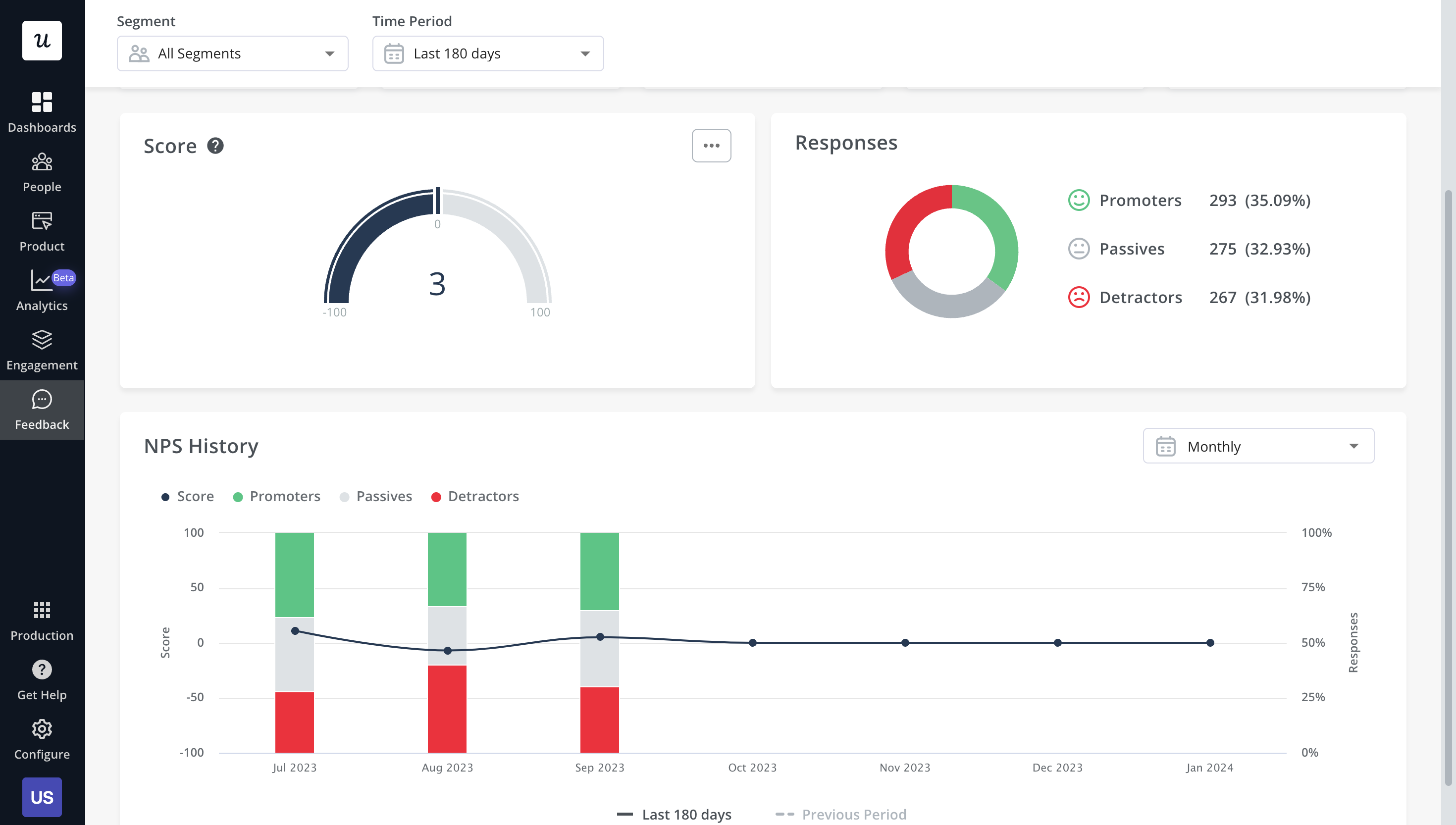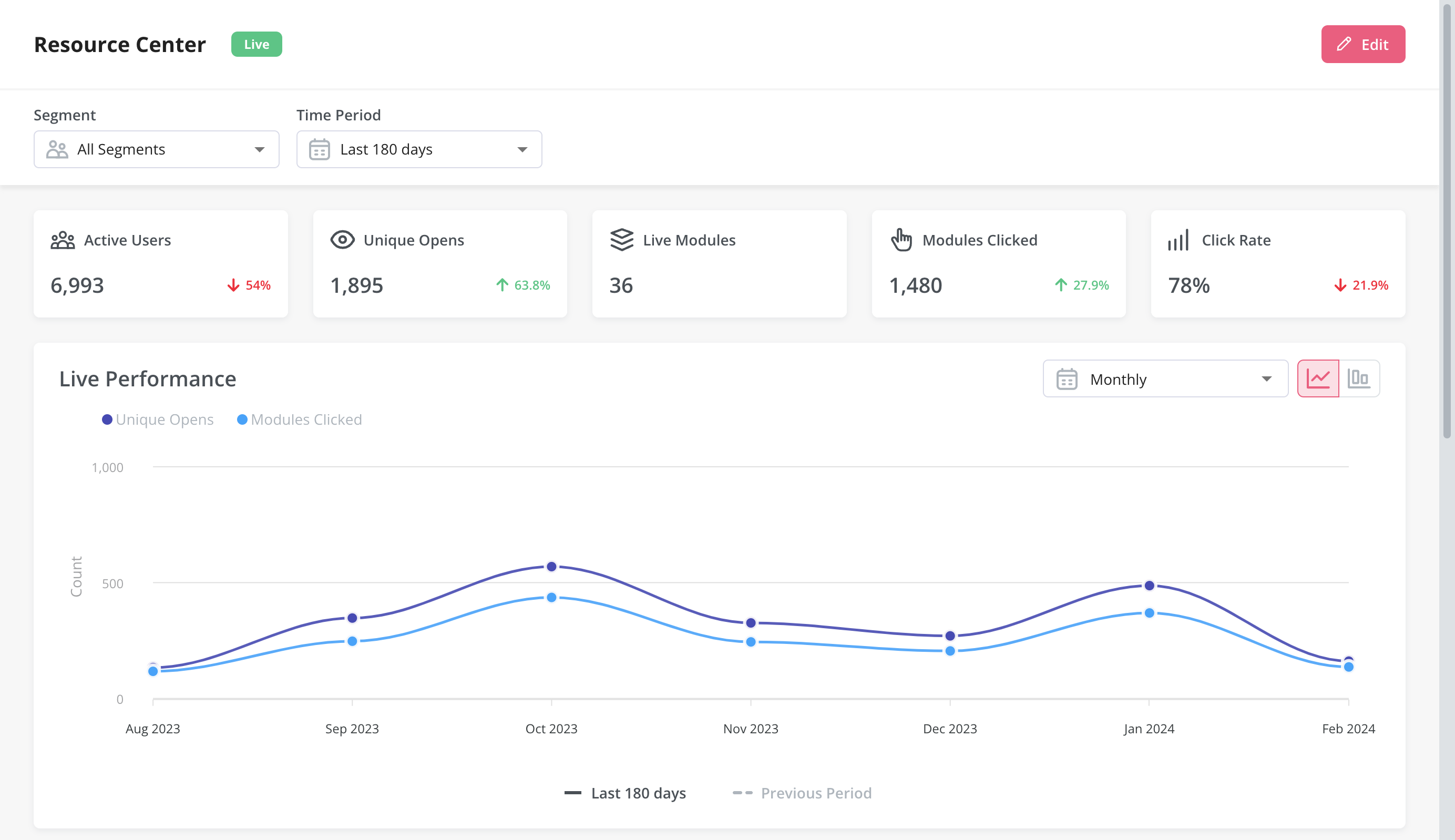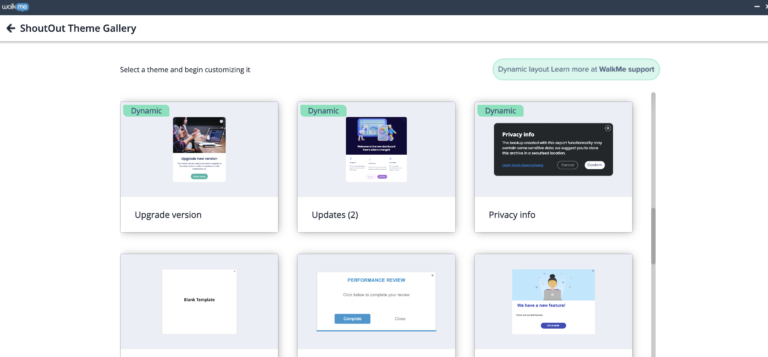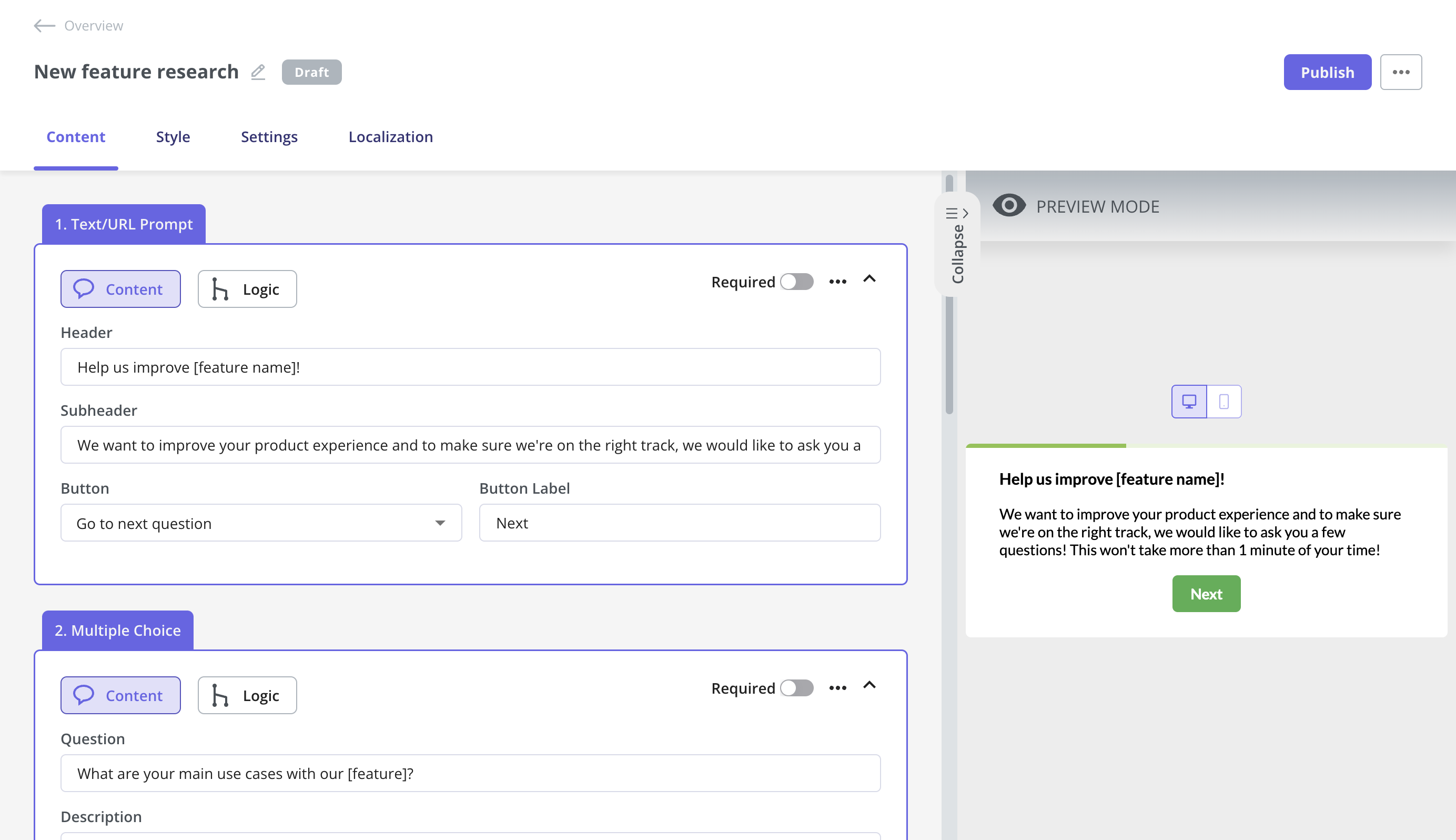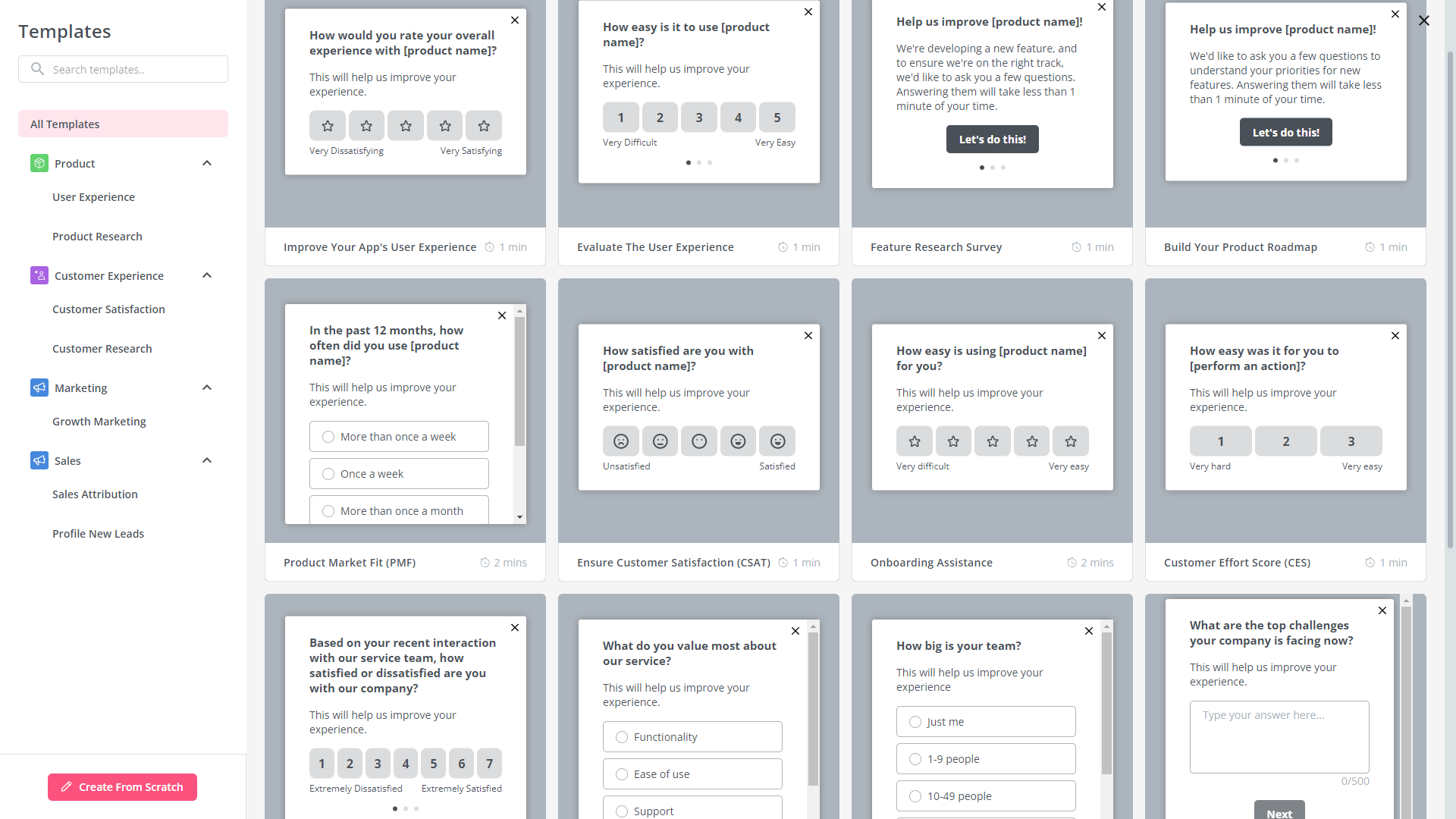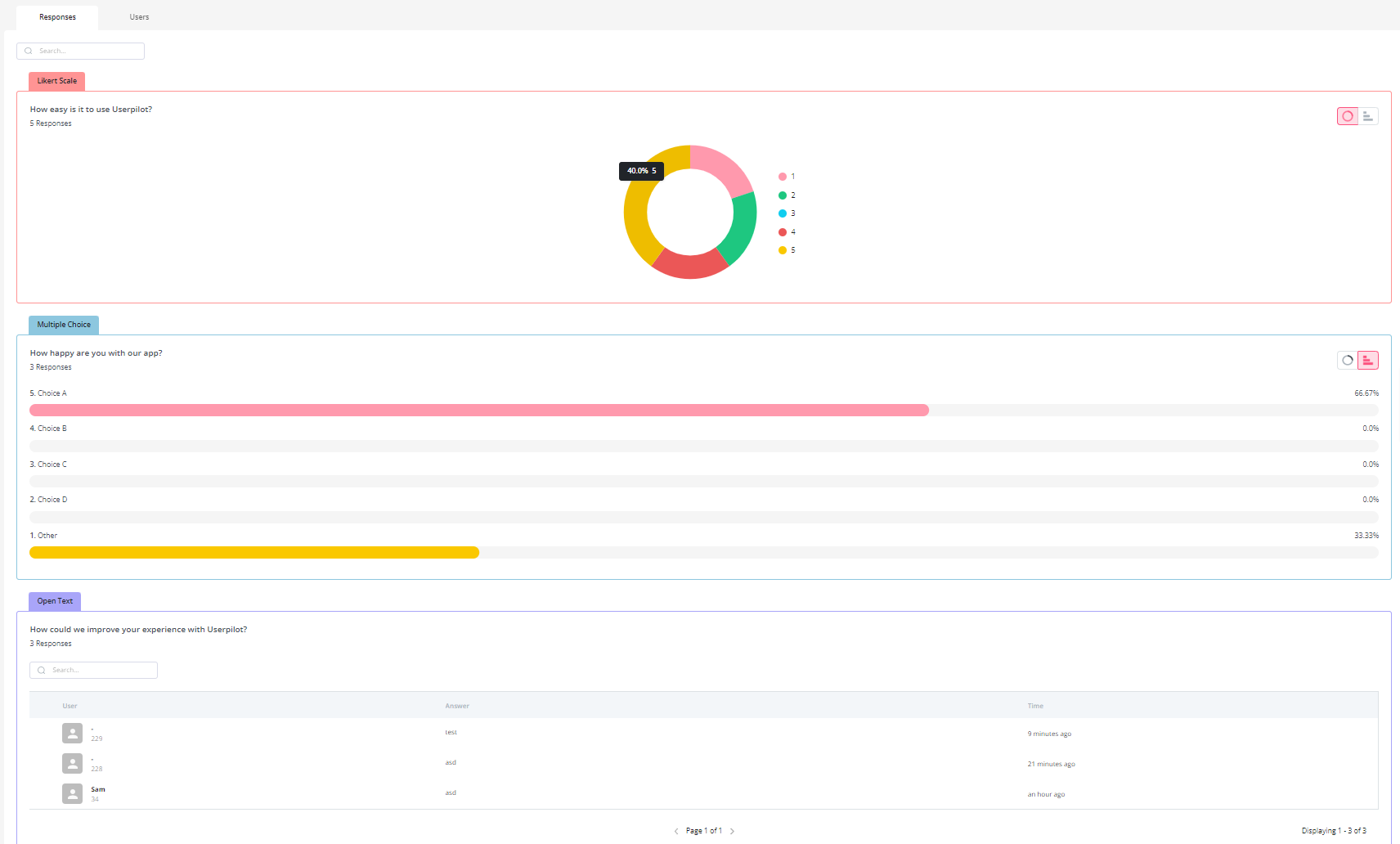
Try Userpilot Now
See Why 1,000+ Teams Choose Userpilot

What is Userpilot?
Userpilot is a product growth platform that drives user activation, feature adoption, and expansion revenue. It also helps product teams collect user feedback, streamline onboarding, and gather actionable insights from analytics.

With Userpilot, you’ll be able to track both product usage and user behavior to get a holistic view of how customers use your product — which will guide future development, improve the user experience, and inform your growth efforts.
What is WalkMe?
WalkMe is a digital adoption platform that can help you create frictionless experiences for your customers. The platform is built keeping the compliance, scalability, and security needs of enterprises in mind.
Using it, you can onboard customers and keep them engaged throughout their lifetime with your business. With powerful features like workflow automation and analytics, you can use it to grow your enterprise.
Userpilot vs WalkMe for user onboarding
In this section of the article, we’re really going to compare Userpilot vs WalkMe in terms of user onboarding. That way, we’ll be able to figure out which tool – Userpilot or WalkMe – is the best option depending on your use case.
Userpilot for user onboarding
User onboarding is a crucial part of the customer journey as it speeds up the adoption process and increases retention rates. Onboarding is one of Userpilot’s core use cases along with product growth analytics and user feedback, so it has plenty of features that you can utilize.
Here are some Userpilot features you can use when onboarding new users:
- No-code builder: Creating flows with Userpilot is as simple as installing the Chrome extension, selecting the UI patterns you’d like to use, and then editing the content/settings to suit your use case. You can also use templates to create modals, slideouts, tooltips, and driven actions.
- Native tooltips: Userpilot lets you create native tooltips that show up when users hover over an element or click on an information badge. Since these native tooltips attach to the element itself, they aren’t page-dependent and will show up on any screen where that element is visible.
- Funnel analytics: Userpilot’s advanced analytics lets you create funnel reports that track the onboarding journey. You can also add filters (like name, user ID, signup date, operating system, country, etc.) and monitor the total conversion rate from the first step of the funnel to the last.
- User segmentation: Userpilot lets you segment users based on the device they’re using, where they’re located, their engagement data, or which NPS rating they selected on the latest survey. You can then filter your analytics dashboards to see which segments struggle with onboarding.
WalkMe for user onboarding
Any digital adoption platform that seeks to gain the attention of businesses needs to have a solid lineup of features for user onboarding. It’s crucial because this is the stage where you can make a first impression on your users. Hand-holding them in this phase can help them get up to speed soon.
WalkMe has a bunch of features for user onboarding:
- You can create an onboarding checklist through the Onboarding Tasks feature on WalkMe. It’s possible to set different goals inside your checklist so users can keep checking them as they complete them. The Onboarding Tasks can include Smart Walk-Thrus, videos, and articles to guide your new users.
- You can also use WalkMe’s SmartTips feature to guide your users through the app’s UI. These serve as on-screen guidance and help reduce the learning curve for new users. Clicking on a SmartTip opens a pop-up that gives more information on the element.
- Likewise, you can use ShoutOuts to draw your new user’s attention to specific announcements. They’re essentially banners that you can use to show users what they need to know when getting started. You can also get them to take action through ShoutOuts.
- You could also use Launchers in your onboarding flow for some self-guidance. When users click on Launchers, a new action like a Smart Walk-Thru will get triggered. Users can click on each Launcher you create to learn more about your platform.
Userpilot vs WalkMe for product adoption
In this section of the article, we’re really going to compare Userpilot vs WalkMe in terms of product adoption. That way, we’ll be able to figure out which tool – Userpilot or WalkMe – is the best option depending on your use case.
Userpilot for product adoption
Product adoption is when users become repeat users of your product. It covers the entire journey spanning from the awareness stage to trial signup and finally full-on adoption. As a product growth platform, Userpilot has advanced analytics capabilities for tracking adoption over time.
Here are the Userpilot features that can help you measure and improve product adoption:
- Product analytics: Userpilot lets you create trend reports to track adoption over time by feature or segment, funnel reports that show you which steps of the process most users get stuck on, and integrations with third-party analytics providers so you can sync data between tools.
- Product usage dashboard: It collects all your key product usage metrics automatically without you having to set anything up: your Daily, Monthly, and Weekly Active Users and Companies, Trends of Active Users and Companies over time, user stickiness, top pages, features, and events, as well as the most engaged users, highest user activity times throughout the day, user retention, average session duration and product usage by browser.
- Feature engagement: Userpilot’s click-to-track feature tagger lets you see how often a feature is used and by how many people. You’ll also be able to see the top 20 events for a certain time period or create custom events that group multiple features together for clearer insights.
- Feedback collection: Userpilot has a no-code survey builder with 14 templates to choose from. You’ll be able to collect quantitative data like CSAT, CES, or NPS ratings and qualitative feedback on the strongest/weakest parts of your product straight from your users.
- User insights: The Insights dashboard lets you monitor user activity based on which segment they’re in and which company they’re from. You’ll also be able to choose from daily, weekly, and monthly time periods to see if user activity is shifting towards full product adoption over time.
WalkMe for product adoption
Any digital adoption platform that seeks to gain the attention of businesses needs to have a solid lineup of features for user onboarding. It’s crucial because this is the stage where you can make a first impression on your users. Hand-holding them in this phase can help them get up to speed soon.
WalkMe has a bunch of features for user onboarding:
- You can create an onboarding checklist through the Onboarding Tasks feature on WalkMe. It’s possible to set different goals inside your checklist so users can keep checking them as they complete them. The Onboarding Tasks can include Smart Walk-Thrus, videos, and articles to guide your new users.
- You can also use WalkMe’s SmartTips feature to guide your users through the app’s UI. These serve as on-screen guidance and help reduce the learning curve for new users. Clicking on a SmartTip opens a pop-up that gives more information on the element.
- Likewise, you can use ShoutOuts to draw your new user’s attention to specific announcements. They’re essentially banners that you can use to show users what they need to know when getting started. You can also get them to take action through ShoutOuts.
- You could also use Launchers in your onboarding flow for some self-guidance. When users click on Launchers, a new action like a Smart Walk-Thru will get triggered. Users can click on each Launcher you create to learn more about your platform.
Userpilot vs WalkMe for customer experience
In this section of the article, we’re really going to compare Userpilot vs WalkMe in terms of customer experience. That way, we’ll be able to figure out which tool – Userpilot or WalkMe – is the best option depending on your use case.
Userpilot for customer experience
Userpilot gives you an eagle-eye view of the customer experience through user analytics, trend/funnel reports, and feedback collection through different types of surveys.
Here’s how you can use Userpilot to track and analyze customer experience insights:
- User analytics: The users dashboard gives you an overview of all your users while letting you sort by segment, company, or when they were last seen. You can also export user data in bulk as a CSV or click on the Insights tab to see segment-specific insights for a given time period.
- Trends and funnels: Userpilot’s trends and funnels reports let you track certain events like a specific feature’s usage, add filters to narrow down the data, and then create a breakdown based on segmentation data or user attributes — offering quick and actionable CX reports.
- Satisfaction benchmarking: Userpilot has a built-in NPS dashboard that tracks customer loyalty over time. In addition to the NPS dashboard, you can also use Userpilot’s survey templates to run CSAT or CES surveys and gather additional quantitative and qualitative insights on the customer experience.
- Self-service support: Userpilot lets you build in-app resource centers, which can include feedback widgets to collect feedback passively, checklists to walk users through specific processes, or integrations with knowledge bases to leverage existing documentation.
- In-app flows: Userpilot’s no-code flow builder helps you create product experiences that can help you optimize the customer experience by educating customers and reducing their time-to-value (TTV). All UI patterns are available on every Userpilot plan from Starter to Enterprise.
WalkMe for customer experience
The clear path to better user retention and low churn is a frictionless customer experience. When users can use your product well to achieve their goals, they’ll likely stick to it. This can boost product adoption and revenue as well.
Here’s what WalkMe has to offer for elevating your customer experience:
- The Onboarding Tasks feature helps you create a smooth onboarding journey for your customers. It enables them to understand how to use it well through a self-service checklist.
- Similarly, you can use SmartTips, ShoutOuts, and Smart Walk-Thrus to help your users discover new features and make it easy for them to start using them. You can also provide targeted guidance to them by creating segments in your audience.
- The ActionBot can be used to direct users to relevant knowledge base articles to help them overcome any roadblocks.
- WalkMe gives you detailed analytics on your users and how they engage with your in-app engagements. You can use them to improve your product and features further to boost customer experience.
Userpilot vs WalkMe for user feedback
In this section of the article, we’re really going to compare Userpilot vs WalkMe in terms of user feedback. That way, we’ll be able to figure out which tool – Userpilot or WalkMe – is the best option depending on your use case.
Userpilot for user feedback
User feedback is an essential part of listening to the Voice of the Customer (VoC) and making product development or marketing decisions that best suit your customer base. Userpilot has a no-code survey builder, 14 templates to choose from, and advanced analytics for extracting insights.
Here are the Userpilot features you can use to collect customer feedback and analyze it:
- Survey builder: Userpilot’s survey builder lets you edit the content, update the widget’s style/placement, and set page-specific or event-specific triggers to ensure that users see the survey at the most contextual moment — all without writing a single line of code. You can also translate surveys into your audience’s native language.
- Survey templates: There are 14 survey templates to choose from with a wide array of different use cases. You can collect qualitative responses on how to improve the user/product experience or quantitative data for customer satisfaction benchmarking such as CSAT and CES scores.
- Advanced analytics: Userpilot’s advanced survey analytics will show you what the most common responses were, what percentage of users selected a specific option, and display open-ended feedback about your product or specific features.
- NPS dashboard: Userpilot’s NPS dashboard compiles response data from all NPS surveys so you don’t have to manually go into each survey and check its analytics. You’ll be able to view key metrics like response rates, total views, and NPS history and sort all the data by different segments.
WalkMe for user feedback
If you want to understand how users feel about your product, it’s important to collect user feedback. The insights you gather from user feedback can be used to recalibrate your product development and customer service efforts, which, in turn, can elevate the user experience.
With WalkMe, you can collect user feedback with ease:
- WalkMe enables you to create NPS, feedback, and knowledge test surveys. Feedback surveys help you collect specific feedback related to new features that you’ve released. Similarly, NPS surveys let you understand where your customer loyalty and satisfaction stand.
- You can set the frequency for surveys to decide when and where your surveys should show up. It’s also possible to target the surveys to specific segments in your user base to collect targeted insights.
- You can track the results of your surveys in WalkMe Insights. It’ll show you metrics like detractors, promoters, and passives for NPS surveys.
Userpilot vs WalkMe: Which one you should choose?
To further simplify this selection process, let’s break down the strengths and limitations of each tool. Understanding the distinct advantages and potential drawbacks of Userpilot and WalkMe will provide you with a detailed roadmap for making a well-informed decision!
Pros and cons of Userpilot
Pros of Userpilot
As a full-suite digital adoption platform, Userpilot has all the features you need to onboard users, track analytics, and gather feedback from customers without writing a single line of code. Here are a few pros of using Userpilot as your product growth solution:
- No-code builder: Userpilot’s Chrome extension lets you build flows, add UI elements, and tag features without writing a single line of code.
- UI patterns: There are plenty of UI patterns to choose from when using Userpilot, such as hotspots, tooltips, banners, slideouts, modals, and more!
- Startup-friendly: Userpilot’s entry-level plan gives you access to all available UI patterns so you can hit the ground running.
- Walkthroughs and flows: Build engaging interactive walkthroughs and personalized onboarding flows that target specific segments of your user base.
- Self-service support: Build an in-app resource center to help users solve problems, customize its appearance to align it with your brand, and insert various types of content (videos, flows, or chatbots) to keep your customers satisfied.
- A/B testing: Userpilot’s built-in A/B testing capabilities will help you split-test flows, iterate on the best-performing variants, and continually optimize based on user behavior.
- Feedback collection: Userpilot has built-in NPS surveys with its own unified analytics dashboard and response tagging to help you retarget users. There are other survey types to choose from and you can even create your own custom survey.
- Survey templates: There are 14 survey templates to choose from so you can gather feedback on specific features or run customer satisfaction benchmarking surveys like CSAT and CES.
- Advanced analytics: Userpilot lets you analyze product usage data, monitor engagement on all in-app flows, and use the data to create user segments that are based on behaviors instead of demographics.
- Event tracking: Userpilot’s no-code event tracking lets you tag UI interactions (hovers, clicks, or form fills) and group them into a custom event that reflects feature usage.
- Third-party integrations: Userpilot has built-in integrations with tools like Amplitude, Mixpanel, Kissmetrics, Segment, Heap, HubSpot, Intercom, Google Analytics, and Google Tag Manager so you can share data between all the solutions in your tech stack.
Cons of Userpilot
Of course, no tool is perfect and there are a few cons to consider before choosing Userpilot as your user onboarding or product growth solution:
- Employee onboarding: Currently, Userpilot only supports in-app customer onboarding.
- Freemium plan: There’s no freemium Userpilot plan so those bootstrapping their startup and need sub-$100 solutions should consider more affordable onboarding platforms like UserGuiding or Product Fruits.
Pros and cons of WalkMe
Pros of WalkMe
WalkMe is among the most popular platforms out there for digital adoption, especially for enterprises. It’s got a range of useful features that businesses can leverage to create in-app engagements, track user behavior, and retain customers, among other things. Here are the pros of using WalkMe:
- Multiple in-app engagements: Offers a bunch of in-app engagement options, including product tours, tooltips, help widgets, onboarding checklists, and more. Using them well can help you engage your customers.
- User-friendliness: The platform is quite user-friendly in terms of creating in-app engagements. And while it does have a moderate learning curve as a whole, it becomes easy to use once you get the hang of it.
- Lots of analytics: WalkMe provides in-depth analytics on a range of things like in-app engagements and forms to help you understand the impact that they’re creating. This helps you optimize your strategies for better results.
- Workflow automation: Workflow automation features like onboarding automation stand out as they enable you to automate a series of steps and processes like clicking buttons to make your customer experience better.
- Community: WalkMe offers a strong community of experts and partners who can help you whenever you get stuck.
Cons of WalkMe
While WalkMe has a bunch of good things to offer that make it one of the leading digital adoption platforms out there, it does have a few drawbacks that prevent you from unlocking its full potential. Let’s take a look at some of the cons of this platform:
- Coding knowledge: Even though WalkMe is no-code/low-code for most of its functions, you’ll need to know HTML or CSS to make the most out of the platform.
- Challenging on complex sites: The process of implementing WalkMe on your website depends on the complexity of your site. You might find it challenging to ensure that your content behaves the way it should if you’ve got a complicated website.
- Focused on employees: WalkMe’s primary use case lies in digital adoption for employees, even though it has a specific plan for customers. However, this makes it slightly weaker compared to other platforms that have been dedicatedly built for customers.
Userpilot vs WalkMe – Why Userpilot might be a better choice?
 Userpilot is a comprehensive digital adoption platform that helps teams track product usage and user behavior. WalkMe offers similar features but is purpose-built for enterprises. So let’s figure out why Userpilot is better than it:
Userpilot is a comprehensive digital adoption platform that helps teams track product usage and user behavior. WalkMe offers similar features but is purpose-built for enterprises. So let’s figure out why Userpilot is better than it:
- Affordability: Userpilot’s pricing plans start as low as $299/month (billed yearly). It also offers an Enterprise plan that’s fully customizable based on your requirements. This makes Userpilot more affordable than WalkMe, which can set you back by a few thousand dollars annually.
- Ease of use: While WalkMe might be easy to use and get started, Userpilot is much simpler to implement. With Userpilot, you don’t need to have any technical knowledge to customize your in-app experiences. This isn’t the case with WalkMe.
- Numerous UI elements: Unlike WalkMe, Userpilot gives you the option to create loads of UI elements like modals, tooltips, progress bars, product tours, and walkthroughs, among others. This is more than what WalkMe has to offer in terms of UI elements.
- Surveys: Userpilot offers numerous advanced options for surveys like behavior-based triggers and translation. Such features aren’t available on WalkMe.
Conclusion
Hopefully, this post helped you decide whether Userpilot or WalkMe is more appropriate for your company. As you can see, both have many upsides and downsides.
However, Userpilot provides a better value for money and is a better choice for a mid-market SaaS, especially when it comes to user onboarding and user feedback.
If you’re interested in finding more, book a demo with our team here!
Try Userpilot – The Best User Onboarding Solution for SaaS


